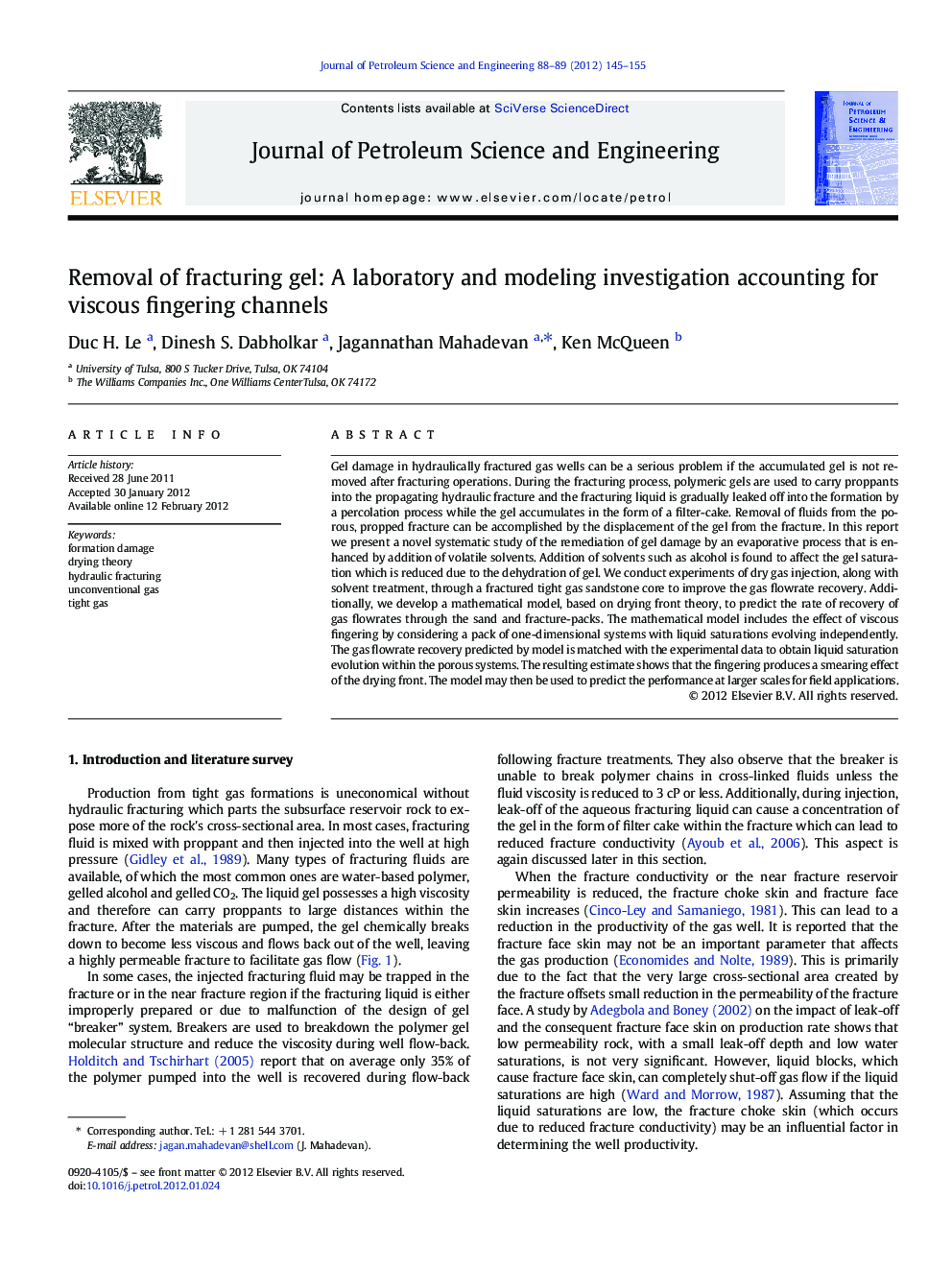| Article ID | Journal | Published Year | Pages | File Type |
|---|---|---|---|---|
| 8127523 | Journal of Petroleum Science and Engineering | 2012 | 11 Pages |
Abstract
Gel damage in hydraulically fractured gas wells can be a serious problem if the accumulated gel is not removed after fracturing operations. During the fracturing process, polymeric gels are used to carry proppants into the propagating hydraulic fracture and the fracturing liquid is gradually leaked off into the formation by a percolation process while the gel accumulates in the form of a filter-cake. Removal of fluids from the porous, propped fracture can be accomplished by the displacement of the gel from the fracture. In this report we present a novel systematic study of the remediation of gel damage by an evaporative process that is enhanced by addition of volatile solvents. Addition of solvents such as alcohol is found to affect the gel saturation which is reduced due to the dehydration of gel. We conduct experiments of dry gas injection, along with solvent treatment, through a fractured tight gas sandstone core to improve the gas flowrate recovery. Additionally, we develop a mathematical model, based on drying front theory, to predict the rate of recovery of gas flowrates through the sand and fracture-packs. The mathematical model includes the effect of viscous fingering by considering a pack of one-dimensional systems with liquid saturations evolving independently. The gas flowrate recovery predicted by model is matched with the experimental data to obtain liquid saturation evolution within the porous systems. The resulting estimate shows that the fingering produces a smearing effect of the drying front. The model may then be used to predict the performance at larger scales for field applications.
Related Topics
Physical Sciences and Engineering
Earth and Planetary Sciences
Economic Geology
Authors
Duc H. Le, Dinesh S. Dabholkar, Jagannathan Mahadevan, Ken McQueen,
